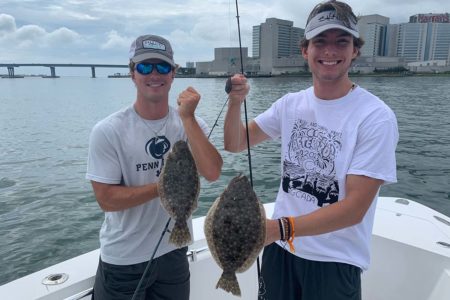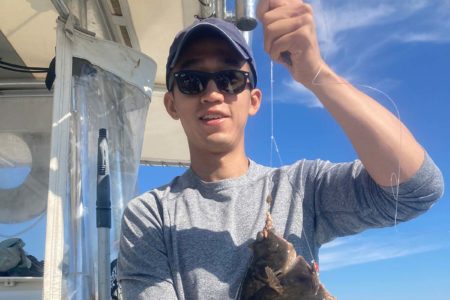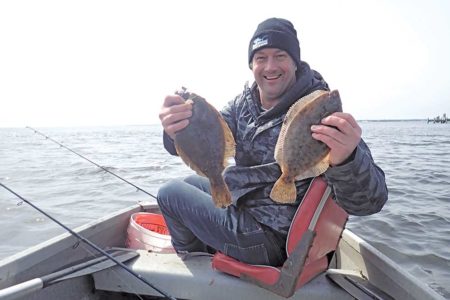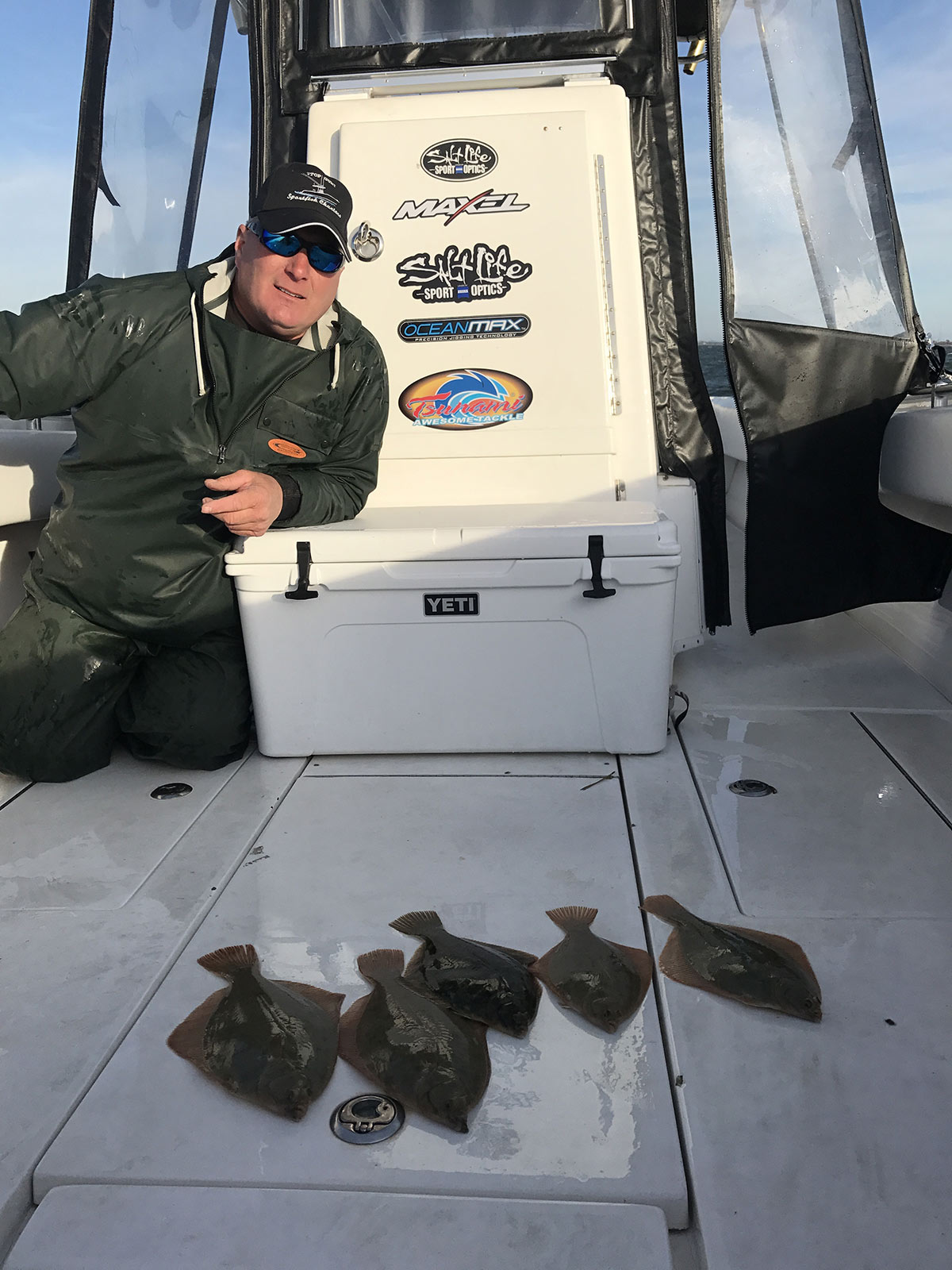
Round out that spring mixed-bag outing with a few good-eating winter flounder.
When I was 10 years old I caught my first black back flounder. It was a fat 2-pounder caught off the Bay Shore Marina Dock in Bay Shore, NY. I had no idea what it was so I put it in my bucket to show my mom when she picked me up later in the day. Within an hour, an older man said that was the biggest flounder he had ever seen off the dock.
From that day on, and for many years, a flounder was the first fish I sought each season. I am now 60, and although I do not hit the water for opening day, I do make several trips in search of flounder every spring. Whether you fish from a boat, or hit a nearby shoreline or pier, flounder action can put a smile on your face.
First off, flounder fishing today is nowhere what it was when I was kid or even in my 20s and 30s. The stocks are down and days of catching three to five fish is considered super in many areas. In spite of reduced seasons, and a lot tougher bite, flounder action is both rewarding and a ton of fun, but not simple.
Unlike striped bass or bluefish, an angler has to know where to find a flattie before he can hook one. With stripers and blues, bait crashing, swift inlet currents and bait pods will all be evident and easy to find. For flounder you have to look at charts and find some likely bottom to hold and attract them – Capt. Segull’s (www.captainsegullcharts.com) are great for this.
Look for shallower areas with a drop-off close by. Flounder will come up out of the depths and onto the flats as the sun warms the area. Back-bay areas with dark, muddy bottoms are always good places to seek flounder, especially when the water is still on the cold side. The black mud will heat up at low tide with the sun warming it. As the tide rises, the mud stays somewhat warm, and has flounder looking for an easy meal.
Bait and Technique
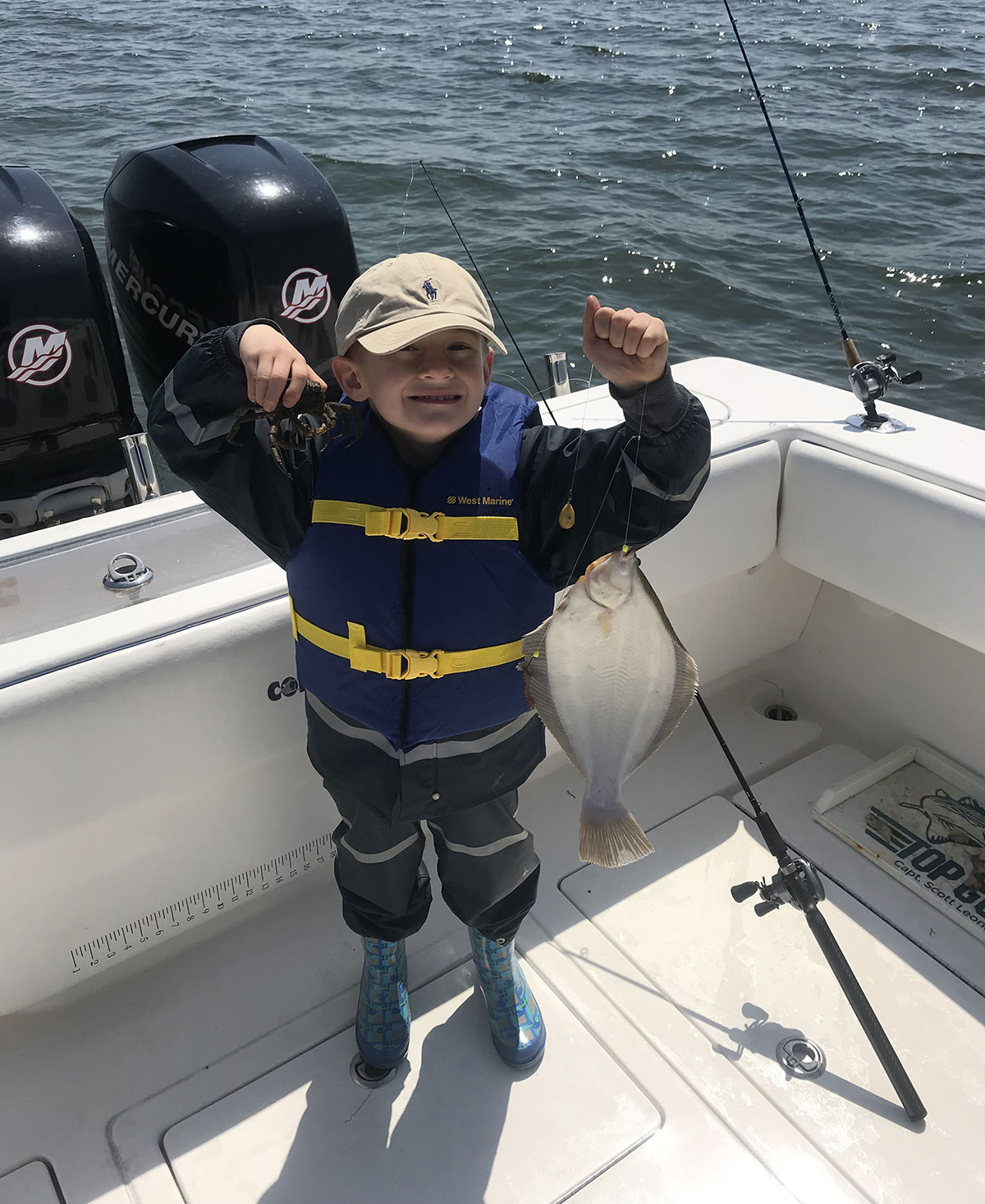
Winter flounder are probably the one species where you can never have too much bait like with other species. For bass, live bait will put a trophy on your line. Blues will readily take a chunk of bunker or mackerel, while a bucktail tipped with spearing is a fluke killer. Move over to flounder and you need chum logs, mussels, blood and sand worms and even some clams – possible red-dyed ones, too! Flounder are picky; what can I say? Some days they will inhale mussels like there is no tomorrow, while others they want red-dyed clams or worms. Fail to have the food de jour and you’re likely to go home empty.
I carry an assortment of baits on any given trip, and try to have all the ones listed. Back in the day you had two to three dozen worms, pounds of clams and bags of mussels for an average flounder foray. In today’s game, I still feel you need to carry the baits, but you can throttle back on the amounts to limit the cost factor. And remember, even though you have the baits, the key could be your approach and willingness to work at it. When I am looking for flounder, the way I work my baits is unique and varies on any given day or for that matter, hour of fishing.
For all my baits I prefer to have a little something hanging off the hook at all times. I want the bait to be as stringy and appealing as possible. Baits of this nature will be gently inhaled by unsuspecting flounder, enabling an easy hookset.
When working a bait, I use several approaches. The first is the simple drop to the bottom, bounce three times, and then let it sit for a few minutes. The second is to drop down and continue bouncing for several minutes, and then let sit. The last one, which I use near pilings and bridge abutments or the likes, is to allow the bait to gently lie on the bottom as still as possible. This one is very similar to cod fishing.
You do not have to set the hook to catch flounder! I repeat; you do not have to set the hook. Flounder will inhale a bait, and then all you have to do is simply lift the rod.
The Essentials
With all fishing there are certain types of gear, sinkers, hooks, etc. that you need in order to be successful, and flounder are no different. I prefer a rod with a fast taper in the 6- to 7-foot class rated for 8 to 14 pounds, matched to an Abu Garcia 6500 spooled with 10-pound braid and a short trace of 15-pound fluorocarbon. If you want to go the spinning route, a 6- to 7-foot rod and a 2500-size reel with 10-pound braid is perfect.
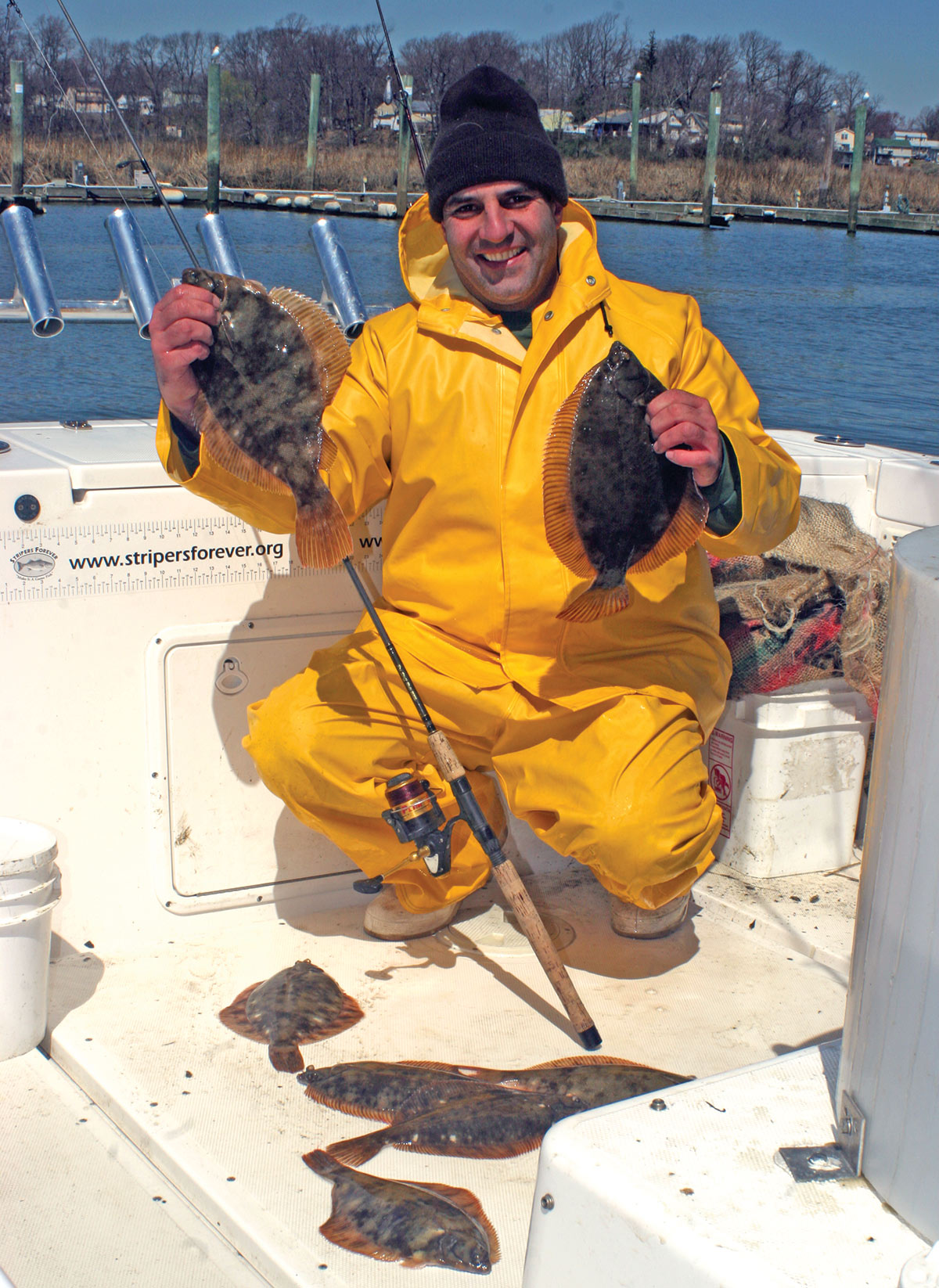
For hooks, the old standard Fin Strike Chestertown long-shank flounder hook in size 6 to 8 is good. The long-shank hook allows your bait to be threaded on the hook, making it difficult for a flounder to slurp off without getting the hook point. Another advantage of the long shank is the ability to add a curly tail grub in yellow or red for added enticement—there are days when this makes all the difference.
The remaining items are the sinker and chum pot. For weight, I use simple bank sinkers in weights from 1 to 3 ounces in the bays and from shore. As long as I can get my rig to the bottom and keep it there determines the weight. I also use fish-finder rigs to ensure the flattie does not feel the weight of the sinker while sucking down my bait. A good chum pot is also a smart move. Keep in mind, however, you do not want to feed the flounder with the chum, just get them in the eating mode. I often use duct tape on the chum pot to limit the flow. The duct tape is wrapped around the chum pot, reducing the flow to only the bottom quarter or third of the pot. This will also save on the cost end by reducing the amount of logs you need to bring. Another important option is having a means to stir the bottom. In areas where you are fishing in water less than 10 feet deep, a long closet pole will enable you to pound the bottom. In deeper water, I opt for old window sash weights. These cast iron weights are heavy and have a unique drop about them. They are about 12 to 16 inches in length and 1-1/2 inches in diameter. As you drop them down, allow them to hit bottom hard, then let slack and fall over. This action really gets the mud up, and also the small bait, which a flounder loves.
There you have it – flounder action made easy. The season is upon us, so watch the fishing reports and head down to your favorite flatfish hole. If all goes well, you should be able to put a few fillets in the skillet. Keep in mind, patience is key. Don’t move around too much, rather pick a good spot either known for flounder or an area on the chart where they are likely to be. Pound the bottom, work the chum pot, and they will come.

